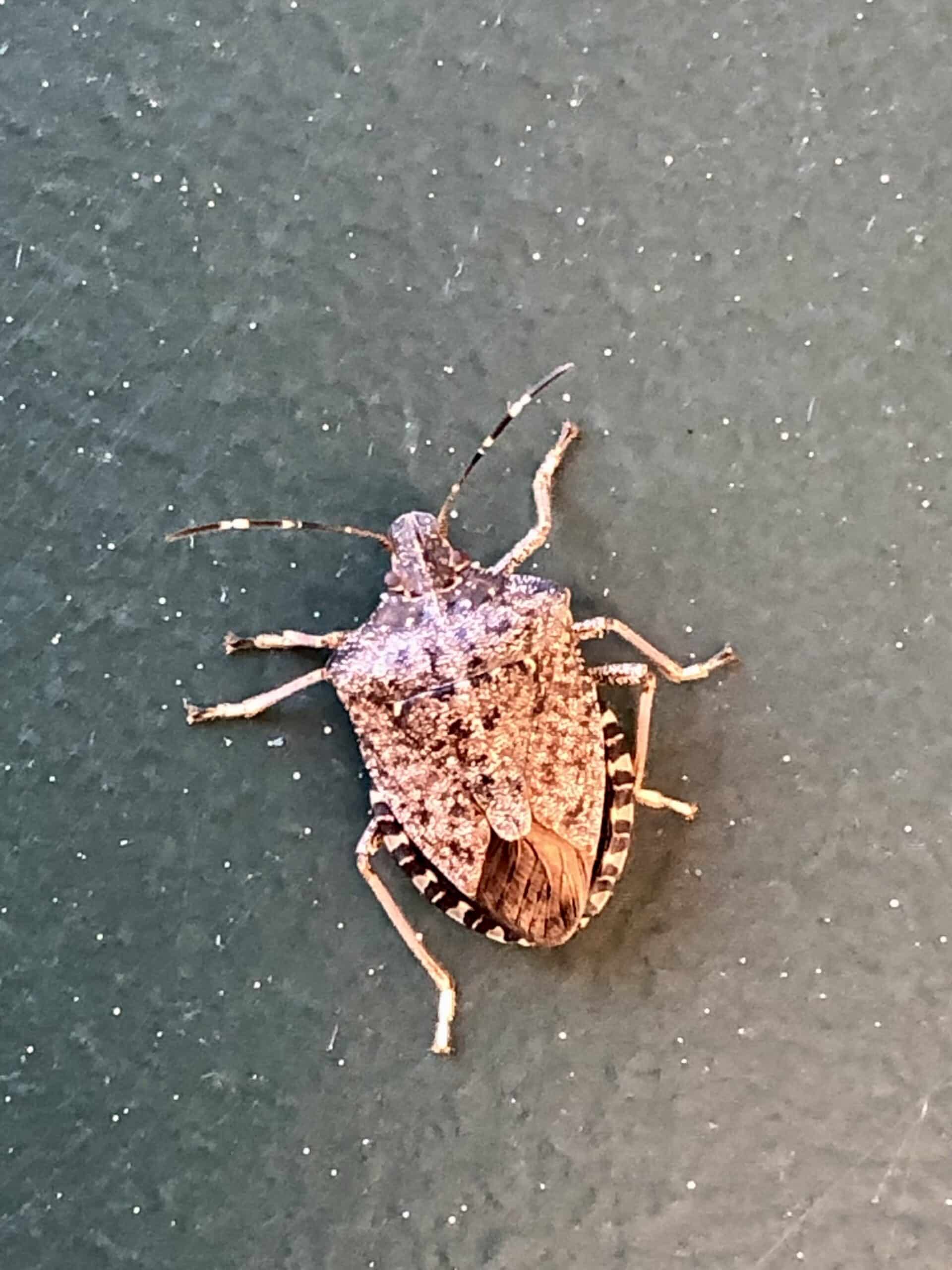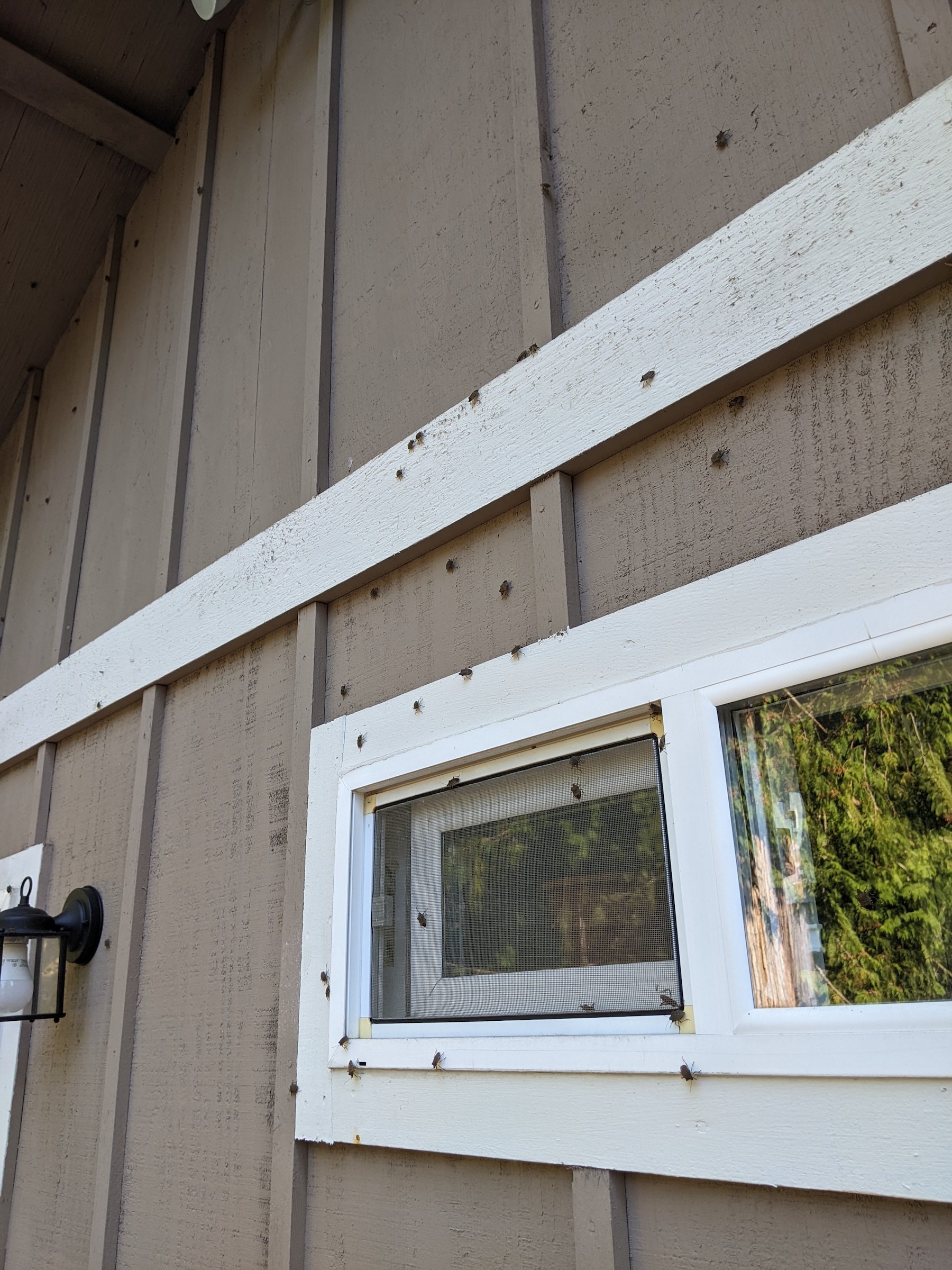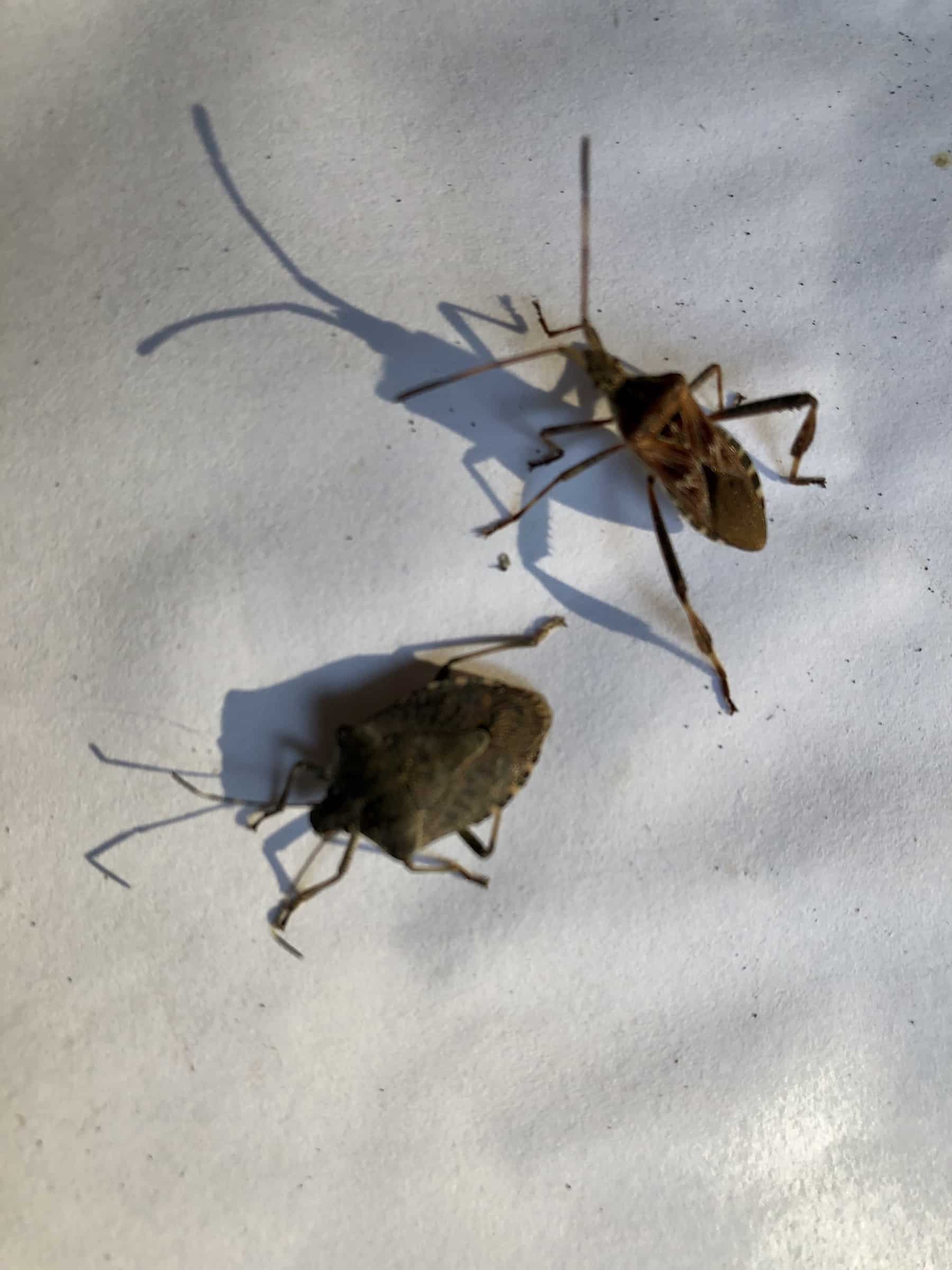Community Environment
Stink bugs making annual fall foray onto, into homes
The Great Stink Bug Invasion of 2022 grows stronger by the day.
Community Sponsor
Community stories are made possible in part by Peninsula Light Co, a proud sponsor of Gig Harbor Now.
The odiferous insects scale walls and windows, probing for a slightly heated nook, cranny or, better yet, passage to the warm indoors to survive the winter. They buzzily dive bomb people. It’s not because they’re angry, they’re just lousy fliers.
Brown marmorated stink bugs
These are not just any stink bugs, of which more than 50 species are found in Washington, according to WSU Pierce County Extension. They are brown marmorated ones, relatively recent immigrants from Asia.
They are mottled brown, of course, about two-thirds of an inch long and nearly as wide, and shaped like a shield. Marmorated means veined like marble, describing the alternating light and dark bands on their antennae and around their edges.

Marmorated stink bugs have alternating dark and light bands on their antennae and the edges of their bodies.
Fortunately, brown marmorated stink bugs are more of a nuisance than a problem to people and pets. They don’t bite or sting. They’re not known to transmit diseases. They just stink. When startled or crushed, they emit a pungent odor. Some compare the smell to cilantro, burned tires and skunk.
Emmet McElhinney, owner of Gig Harbor-based Venom Pest Control with wife Marque, describes the odor as like a rotting coconut, if you’ve ever smelled one of those. He says the stink bugs’ proliferation seems to be cyclical.
“Last year there weren’t that many,” he said. “This year they’ve just exploded. In the past two weeks I’ve probably had 40 calls and numerous inquiries on Facebook and email.”
Bugs are relatively new arrivals
This could just be the onset. Todd Murray, urban entomologist with WSU Extension, said his Puyallup office hasn’t received many reports of stink bugs yet this fall. The creatures are so new to the area that there’s limited understanding of how many to expect.
“It’s been a few winters since we’d had people complaining about them in large numbers, but that doesn’t mean there won’t be this winter,” he said.
Aggregation is an overwintering strategy in which the stink bugs amass by the thousands.
“They form large aggregations and spend winter in the safety of numbers,” Murray said. “Many will survive and feed and reproduce next spring and start the whole process over again.”

Kate Cunha sent a photo of several stink bugs congregated on the side of her house near Goodman Middle School.
Stink bugs are not brown-washing buildings yet this year, but several residents reported substantial numbers in response to a Gig Harbor Now query on Facebook.
Stories of the infestation
“We sprayed our house and they were coming out from under the siding as well,” Mandy Silver of Vaughn said. “It was like a scene from a horror movie. I even completed the scene with screaming and flailing as they began flying everywhere and even landing on me.”
Jackie Morgan posted a photo of a 11 stink bugs on a window shade from which her daughter plucked 26 the previous day, then taped the gaps and wiped it with pest repellant.
A few people shared that stink bugs joined them for the Scarecrow Festival Oct. 1 at Sehmel Homestead Park.
“They were horrible,” said Wendy Reaves Bemenderfer. “Everybody’s tents were covered and they were landing everywhere. You knew when one landed on somebody because of the squeals.”
A follow-up scouting trip to the park last week found the insects sparsely dotting exterior walls, but not forming masses.
Brown marmorated stink bugs are native to China, Korea and Japan. They were first found in the United States in Pennsylvania in the mid-1990s and in the Northwest in about 2004, according to WSU Pierce County Extension.
They thrive here because potential predators have not largely identified them as food. Other insects, spiders, birds and small mammals do eat them or their eggs, but not enough to contain the population.
Local predators need to step up
“It’s not unusual that we get a new pest introduced into this country, with world trade and people moving globally,” Murray said. “It takes some time before that species is able to adapt and things figure out it’s good to eat and start feeding on it to keep it under some level of control. That’s the reason why it shows up in such large numbers. It escaped all natural controls when it was introduced here.”

Potential predators have not largely discovered their fairly new stink bug neighbors, though this spider snagged one for dinner.
Among the predators stink bugs escaped were samurai wasps, but the the tiny wasps followed them here. They feed on the stink bugs’ eggs that are laid in groups of 20 to 30 on the underside of leaves. They search for and destroy 60-90% of the eggs in Asia.
“We’re hoping someday that this wasp does keep it under some level of natural control,” Murray said.
Although brown marmorateds don’t harm people, it’s creepy to have them hanging out at homes, particularly inside. Homeowners can take steps to reduce their numbers, if not eliminate them.
“They don’t do any harm to your property,” said McElhinney, the pest control expert. “They’re not like carpenter ants. They won’t eat your house. I think people are more annoyed as to the numbers that get into the house. They’re in your drapes, on curtains, on the sofa, on the floor in the bathroom. They are quite the invaders.
“The best thing to do is treat the outside of the house to kill them and prevent them from coming in. Go around the house, check around windows and doors for cracks or gaps and seal them up. The best place to check is the vents on each end of the attic space to see if they’re sealed up well.”
Other possible solutions
You can suck up the stink bugs in a shop vac, Murray said. He also recommends getting a home energy audit that can show where both cold air and bugs can enter.
Homemade concoctions can deter them. One recipe is to mix 2 cups of water and 4 teaspoons of garlic powder or a handful of garlic cloves and spray it on indoor windowsills. Another suggests filling a bottle with 2 cups of hot water, 1 cup of white vinegar and 1/2 cup of dish soap, then spraying the bugs directly.
These particular stink bugs can damage plants. They feed on more than 300 kinds, including vegetables, fruit and ornamentals. Instead of munching on leaves, they suck out juices which causes the plants to deform. They are technically an agricultural pest and can cause devastation to crops both on large-scale operations as well as backyard gardens.

People sometimes confuse Western conifer seed bugs (right) with brown marmorated stink bugs (left). They both can emit foul odors, but seed bugs are longer and thinner.
People sometimes confuse brown marmorated stink bugs with western conifer seed bugs, which are also showing up now. The conifer bugs are even colloquially called stink bugs because they also use a foul-smelling spray as a defense, but they are not classified in the stink bug family. They are longer and skinnier than stink bugs.

